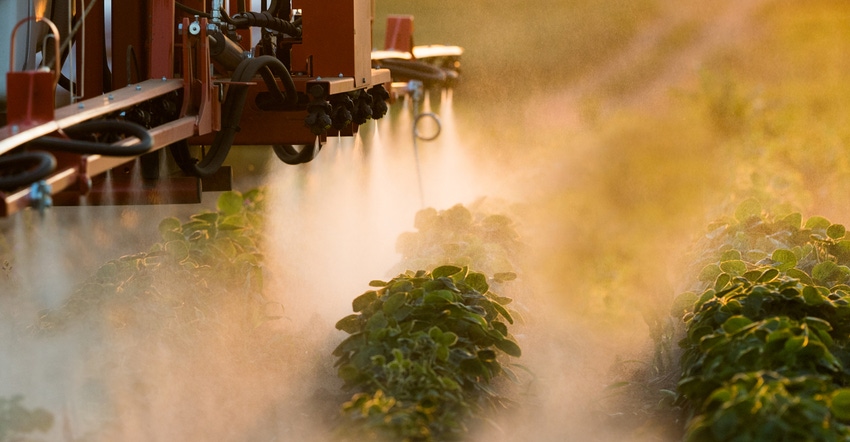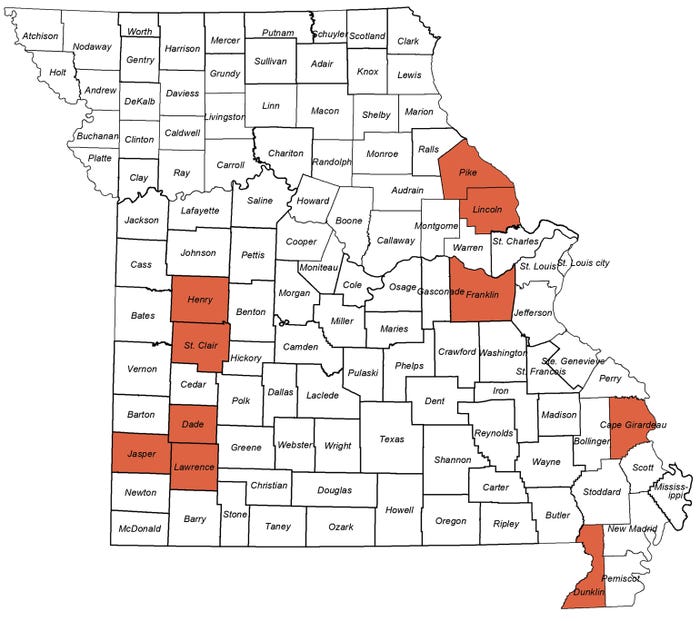
While neighboring states such as Illinois and Arkansas are opting for tougher restrictions for use of dicamba herbicide products on dicamba-resistant soybean and cotton varieties, Missouri will toe the federal line when it comes to application rules.
In October, EPA approved new label registrations for XtendiMax with VaporGrip Technology and for Engenia herbicide. A third dicamba product, Tavium Plus VaporGrip Technology, received an extension of its current registration. All three of the newly registered product labels are scheduled to expire in 2025.
“The EPA did not come out real early with their decision,” says Chris Chinn, Missouri Department of Agriculture director. “So, it would’ve been very unfair for us to change the rules after so many farmers had already made their crop decisions.”
No added state rules
In 2020, Missouri saw an uptick in dicamba drift complaints with 120 complaints compared to 98 complaints in 2019. However, it is a far cry from the 315 complaints in 2017 and 220 in 2018.
To address the dicamba drift situation, Chinn’s department met with farmers, agriculture businesses and agriculture organizations, as well as the product registrants regarding EPA’s new label.
“There is a lot of science that goes into the process,” she says. “We didn’t have the ability to do our own research to make any good conclusions to not stand with the [federal] label. We felt it was in the best interest of Missouri to let the research and the science that the EPA collected support the label for this growing season.”
While states can implement more restrictive rules beyond the federal label, Chinn says the process is more cumbersome. No longer does EPA allow the use of a 24(c) label known as a special local needs label to be more restrictive of federal pesticides. “You can use it to be more lenient,” she says, “but you cannot use it to be more restrictive.”
If states want to put more rules beyond the federal guidelines, they will have to go through the rule-making process. “We wanted to be very cautions moving forward that we didn’t put additional rules on the agriculture community,” Chinn says.
Dicamba label updates
There are major changes in the product labels. Chinn says it is important for farmers and all applicators to understand and follow the new language when using dicamba.
Here are a few of the restrictions when using dicamba products over the top of dicamba-tolerant crops:
Use a volatility-reduction agent. You must use an approved volatility-reduction agent as an adjuvant added to the herbicide mix.
Follow revised cutoff dates. Over-the-top application of dicamba is prohibited after June 30 on soybeans and after July 30 on cotton. However, there are differences in wording among registered products. Apply XtendiMax before June 30 or up to R1 stage of soybean growth, whichever comes first. Apply Engenia before June 30. Apply Tavium before June 30 or up to the V4 stage, whichever comes first.
The lack of the R1 growth stage restriction on the Engenia label could allow for applications later in the season than with XtendiMax, particularly with early planting dates.
Maintain a buffer. Maintain a 240-foot buffer between the last treated row and the downwind field edge. Roads, mowed grass and tolerant crops can be included in the buffer. A 310-foot buffer is needed in areas where listed endangered species reside.
Farmers in Jasper, Dade, Lawrence, St. Clair, Henry, Pike, Lincoln, Franklin, Cape Girardeau and Dunklin counties have an endangered species listed, according to EPA.

Training is a must. Dicamba-specific training on the use of dicamba is still required of all applicators and users, as it has been in the past.
For additional information on Missouri dicamba rules, visit the Missouri Department of Agriculture website.
About the Author(s)
You May Also Like






